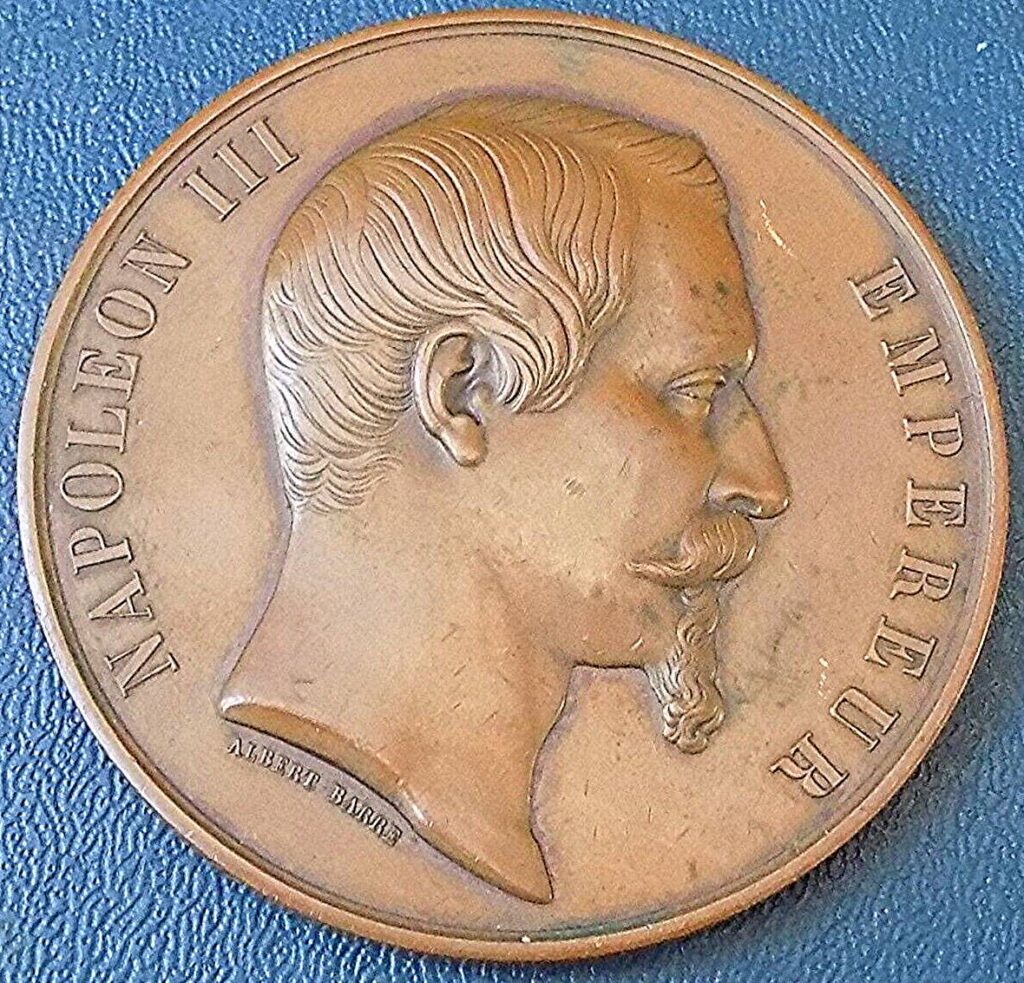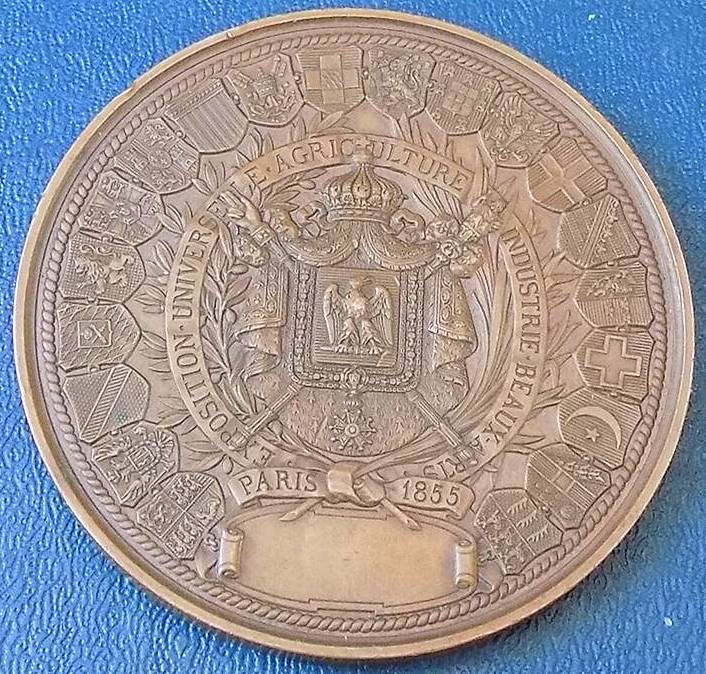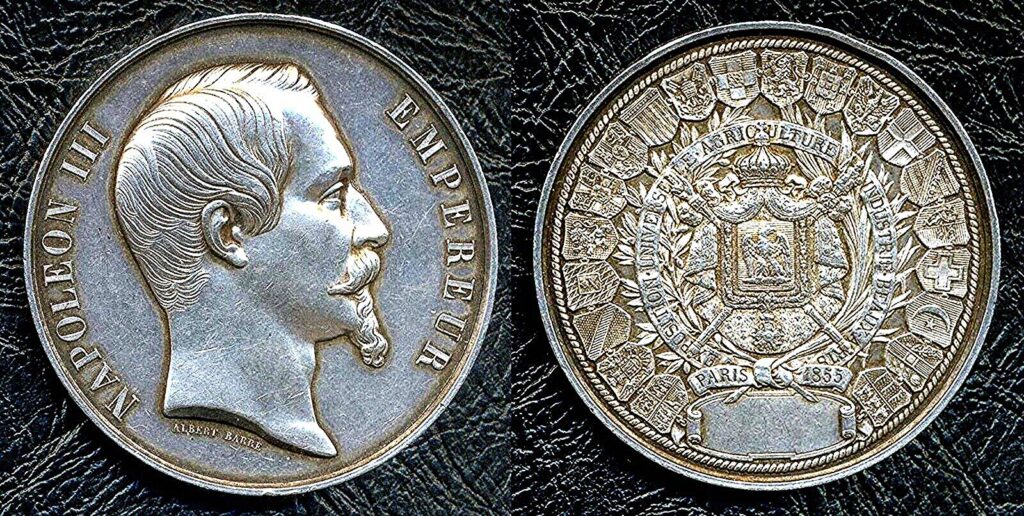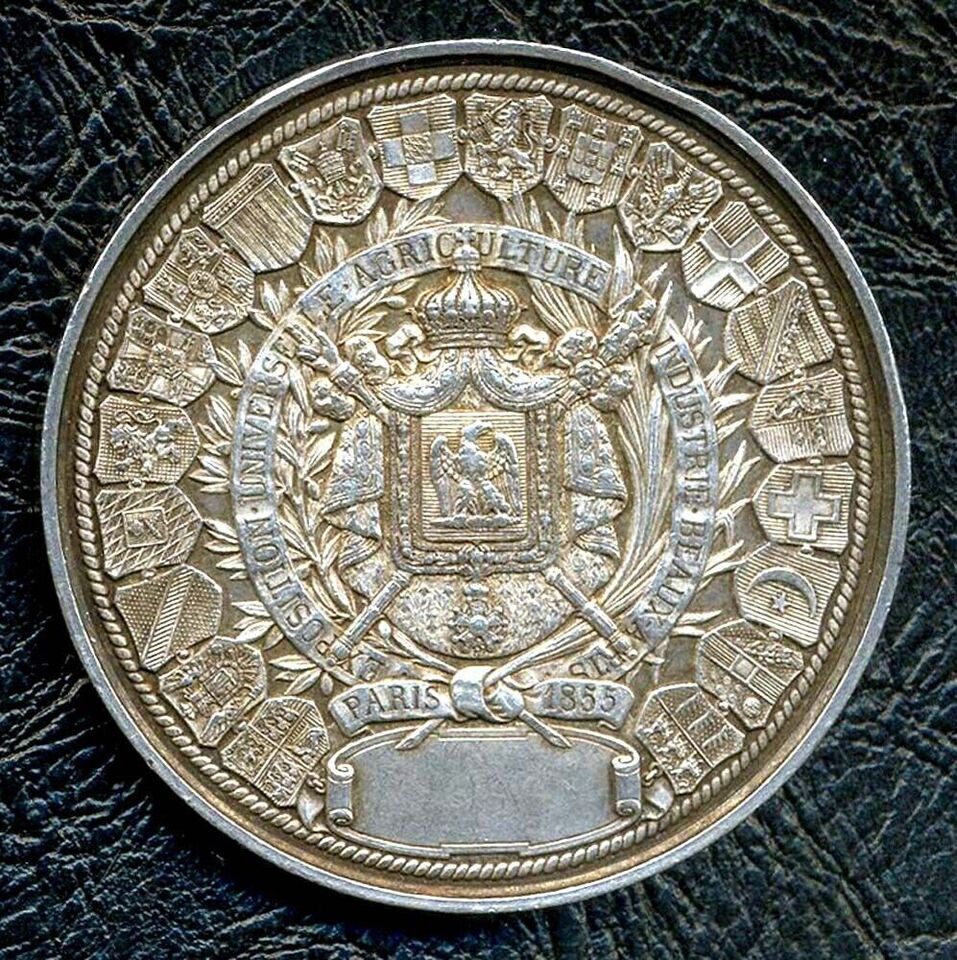Welcome to our dedicated exploration of the award medals from the 1855 Paris Universal Exposition. Held from May 15 to November 15, 1855, in the heart of Paris, this was the second international world’s fair ever organized and the first to be held in France. Designed to showcase the latest advancements in industry and fine arts from across the globe, the exposition drew in over five million visitors, captivated by the grandeur and innovation on display. This page delves into the exquisite medals awarded at the event, celebrating achievements that marked significant contributions to the industrial and artistic landscapes of the 19th century.
Award Medals of the 1855 Paris Universal Exposition: Symbols of Achievement and Innovation
The awards at the 1855 Paris Exposition were categorized into 27 classes, covering a wide array of industries such as mining, metallurgy, forestry, weaving, scientific instruments, chemical products, food preparation, medicine, glass and pottery, fabrics, and musical instruments. This classification allowed for a meaningful comparison of similar exhibits. Each class had three tiers of awards. The highest honor was the Grand Medal of Honor. The next level of recognition, the Medal of Honor, was awarded to distinguished exhibitors. Those who demonstrated notable achievement in their respective classes received a Medal of First or Second Class or an Honorable Mention. Having said this, the medals were had observed are either bronze, silver or gold.

Bronze Award Medal
This medal features a profile of Napoleon III, Emperor of France, with detailed attention to his distinctive hairline, mustache, and goatee. Engraved by Albert Barre, the medal is a 60mm copper piece weighing approximately 108 grams, as indicated by the edge mark “cuivre” with a pointing hand symbol from the Paris Mint.

The reverse side of the medal features an allegorical scene representing the prosperity and industry of France during the 1855 Paris Universal Exposition. In the center, a female figure symbolizing France stands triumphantly, holding a laurel wreath overhead. Surrounding her are various symbols of industry and agriculture, including a sheaf of wheat, a cogwheel, and a hammer. The inscription “Exposition Universelle de 1855” frames the scene, emphasizing the occasion of the exposition.
Silver Award Medal 1855 Paris Exposition

This silver award medal was presented to distinguished participants at the 1855 Paris Exposition, which celebrated forty years of peace in Europe following the Battle of Waterloo. The obverse of the medal features a high-relief portrait of Emperor Napoleon III, symbolizing his reign during this significant cultural event. The reverse showcases the Imperial Arms of France, surrounded by shields representing 20 participating nations, including the U.S., Britain, and Spain, though notably excluding Russia. Below, a scroll reads “EXPOSITION UNIVERSELLE AGRICULTURE INDUSTRIE BEAUX ARTS,” marking the medal’s dedication to the diverse fields showcased at the fair.
The 1855 exposition, held under Napoleon III’s rule, aimed to outshine London’s 1851 Great Exhibition. It introduced the Palais de l’Industrie and was noted for its superior industrial and art exhibits. Over 5 million visitors attended, witnessing the grandeur of the event and the introduction of the Bordeaux Wine Official Classification of 1855, a highlight for wine connoisseurs. The fair covered 16 hectares with 34 countries participating. Despite high costs, the exposition left a lasting legacy, setting the standard for future world fairs and highlighting the convenience of modern travel to Paris.
Specifications:
Material: Silver
Diameter: 59.8 mm
Thickness: 4 mm
Weight: 124.73 grams
Mint: Paris Mint, marked with a pointing hand indicating ‘silver’ (Argent) on the edge.
This medal is not only a rare collectible but also a testament to the historical significance and cultural impact of the 1855 Paris Universal Exposition.
